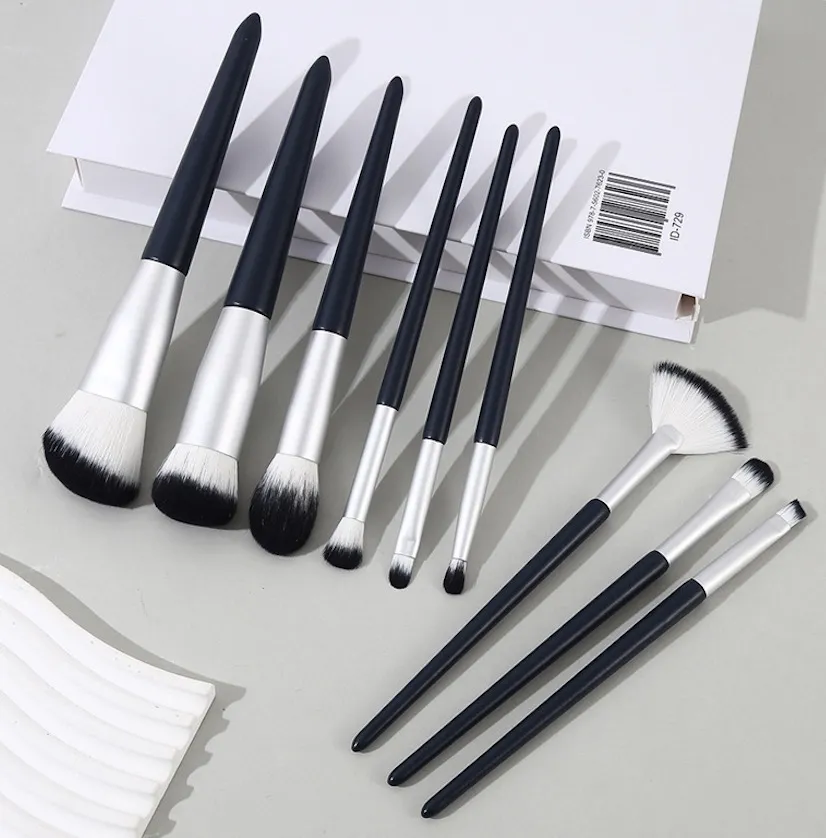Tired of inconsistent brush quality from suppliers? Bad brushes can damage your brand’s reputation and lead to customer complaints. I’ll show you how to spot a high-quality brush in minutes.
A good makeup brush has soft, tapered bristles1, a seamless brass or aluminum ferrule, and a balanced handle. It should show zero shedding during a gentle tug test and after several washes, ensuring flawless application and durability.
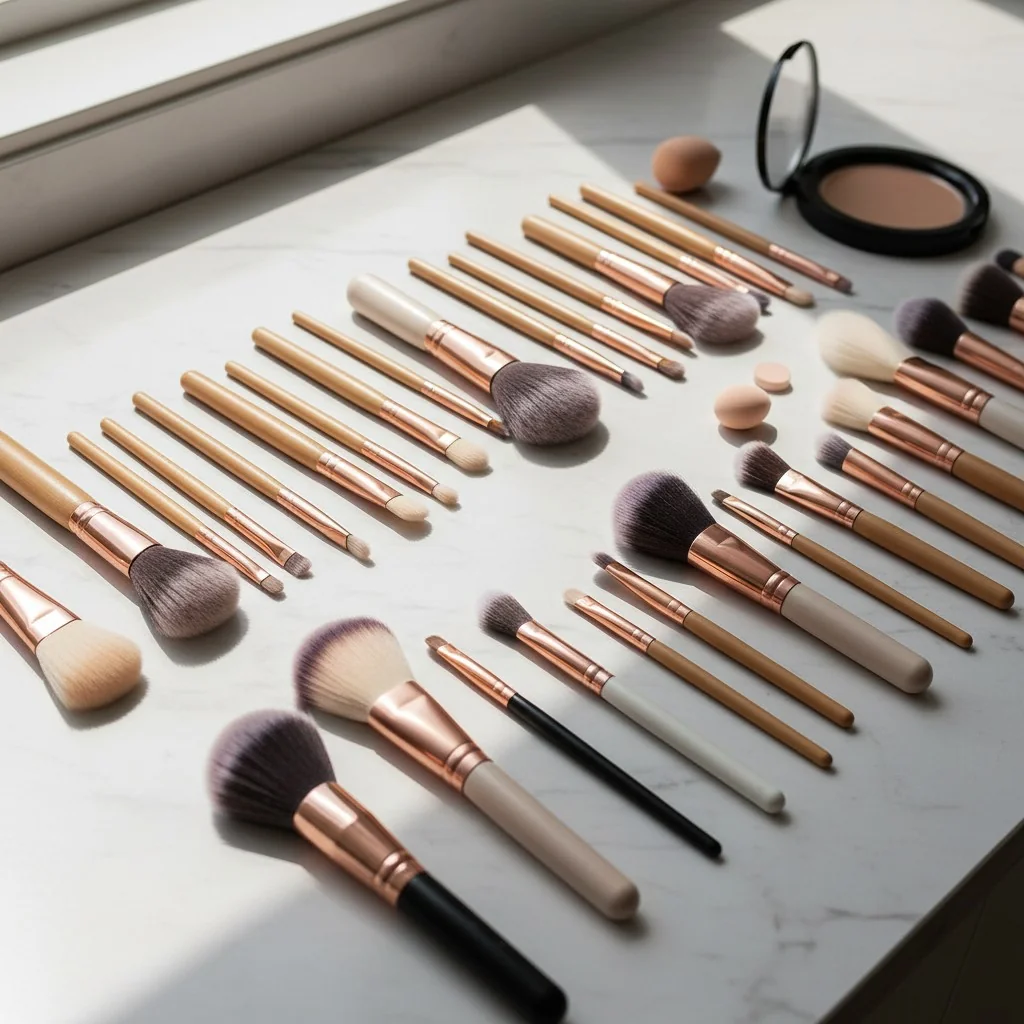
Spotting true quality goes beyond just a soft feel. As a brand founder, you need a reliable way to check every detail, from the bristle tips to the glue inside the ferrule. I learned these checks on the factory floor, and they have never failed me or my clients. They are simple, fast, and incredibly effective. Let’s break down the four key areas you need to inspect. This will help you ensure your brushes meet the highest standards and make your customers happy.
Most professional makeup artists prefer large sets of brushes over individual ones.False
Many pros and consumer tests find that a few high-quality, well-chosen single brushes outperform large, redundant sets.
High-grade synthetic bristles can outperform natural hair for liquid and cream products.True
Modern synthetic fibers like PBT/Taklon are engineered for durability, hygiene, and smooth application of non-powder formulas.
What materials signal a high-quality brush, and how do you test them?
Bristles can look the same but perform very differently. Scratchy, shedding fibers frustrate customers and lead to bad reviews. I’ll show you how to test bristle quality for superior performance.
High-quality brushes use soft, tapered synthetic fibers (like PBT) or well-sorted natural hair. Test for density by pressing the brush head—it should spring back evenly. A gentle tug should result in zero shedding.
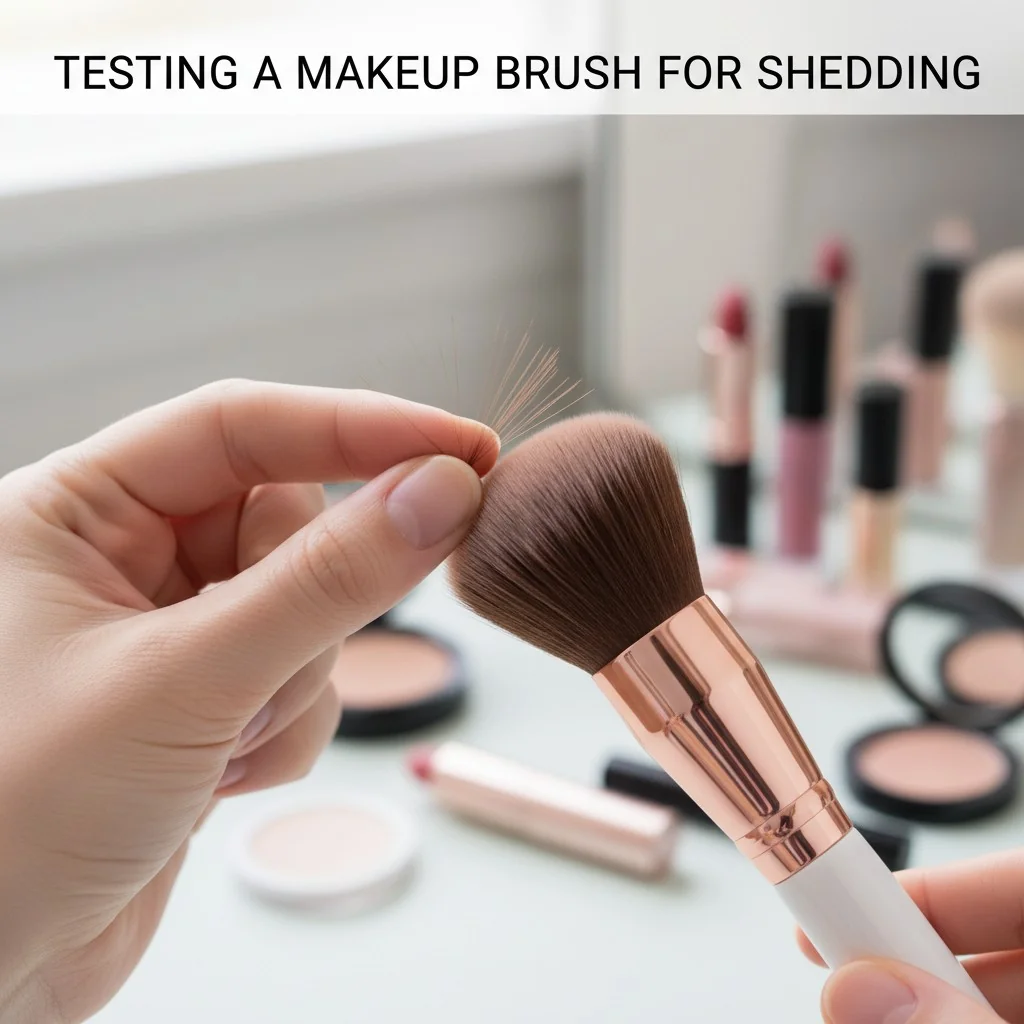
When I first started in a brush factory, the most important lesson I learned was about the bristles. The raw material determines everything. A great brush starts with great fibers. Here’s how you can break down the evaluation process.
Bristle Material and Feel
The first test is simple: touch. The bristles should feel uniformly soft against your skin, with no "prickly" or sharp tips. For synthetic brushes, look for high-grade PBT or Taklon fibers. These are durable and easy to clean. For natural brushes, well-sorted goat, squirrel, or sable hair is excellent for powders because of its texture.
Tip Finishing and Density
Look closely at the bristle tips. They should be tapered, not bluntly cut. tapered tips2 are finer, which dramatically improves how the brush picks up product and blends it on the skin. Next, check the density. Press the brush head gently. It should feel full and evenly packed with no gaps. When you release it, the bristles should spring back into shape uniformly.
The Shedding Test
This is a critical test. A well-made brush should not shed. Lightly tug on the bristles and swirl the brush on your hand. A few loose hairs on the very first use might be acceptable, but anything more is a red flag. A quality brush will have virtually no shedding, even after washing.
| Bristle Type | Best For | Key Quality Indicators |
|---|---|---|
| Synthetic (PBT/Taklon) | Liquids, Creams, Powders | Tapered tips, high density, excellent shape retention after washing. |
| Natural (Goat, Squirrel) | Powders (Blush, Bronzer) | Extreme softness, sorted hair length, superior powder diffusion. |
All synthetic bristles are vegan and cruelty-free.False
While synthetic by nature, the 'cruelty-free' claim also requires ensuring no animal testing occurred in the development or production process, which needs verification.
Crimped synthetic filaments can hold more powder than straight filaments.True
The texture created by crimping mimics the cuticles of natural hair, creating more surface area to pick up and hold powder products.
What visible signs of build quality should you look for?
A brush can feel soft, but then it falls apart. Wobbly handles and shedding ferrules look cheap and unprofessional. Let’s inspect the hidden signs of durable construction that I always check.
Look for a seamless brass or quality aluminum ferrule with a firm, double crimp3. The handle should feel balanced and not wobble when you twist it. There should be no visible glue seeping out.
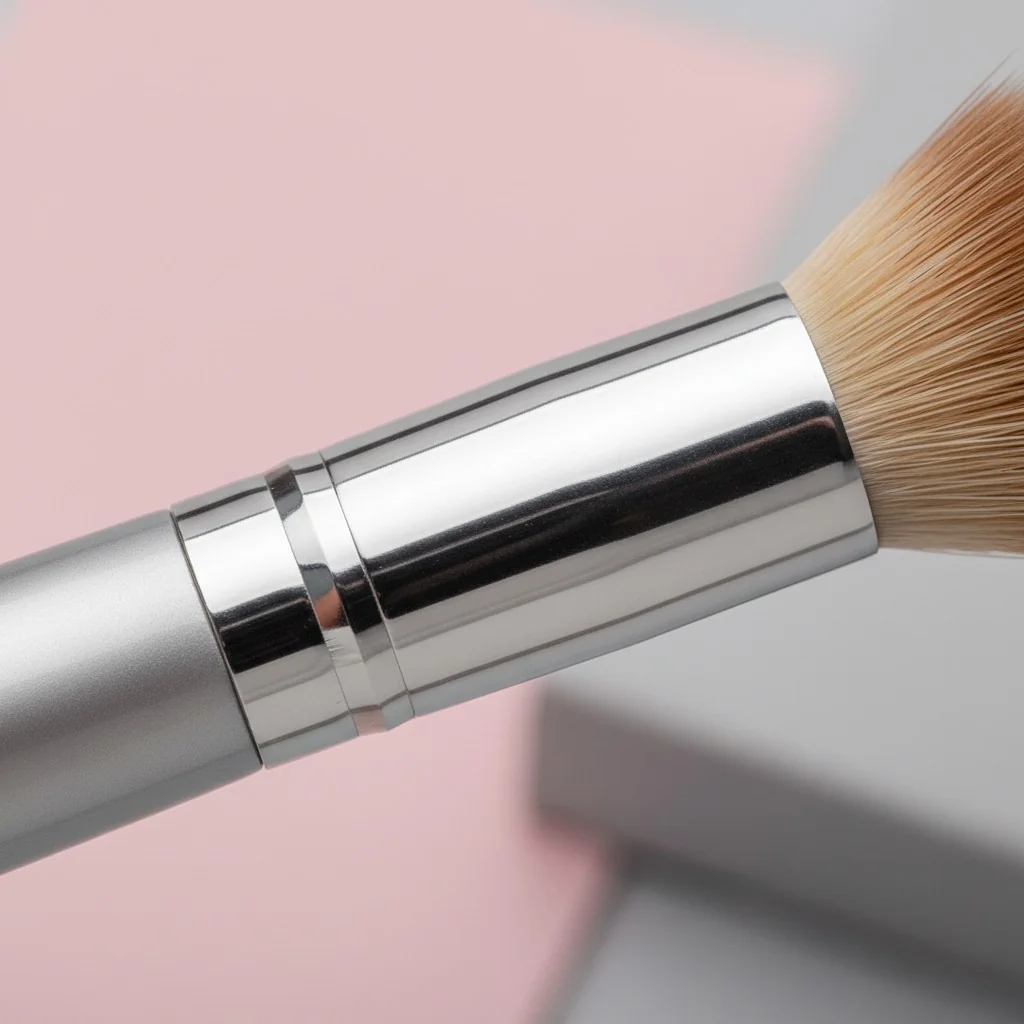
A brush is a tool, and a good tool needs solid construction. After you’ve checked the bristles, your next focus should be the part that holds it all together. I always tell my clients to be very critical here, because this is where many factories cut corners to save costs.
The Ferrule: Metal, Seam, and Crimp
The ferrule is the metal band connecting the bristles to the handle. The best ones are made of brass because it resists corrosion and feels substantial. Anodized aluminum is a good, lighter-weight alternative, but it must be seamless. A seamless ferrule provides a stronger, 360-degree grip on the bristles. Also, check the crimp—the part where the ferrule is clamped onto the handle. It should be a firm "double-crimp" with clean, symmetrical indentations.
The Adhesive and Handle
A wobbly brush is a sign of failure. Gently try to twist the handle and ferrule. There should be zero movement. This indicates a strong adhesive and proper assembly. No glue should be visible where the ferrule meets the handle or bristles. Finally, hold the brush. A balanced, slightly weighted handle improves control. In our tests, both pro artists and everyday consumers preferred handles with a bit of weight for better precision. This is why wood or metal-core handles are often used in premium brushes.
| Component | Look For | Red Flag |
|---|---|---|
| Ferrule | Seamless brass or anodized aluminum | Visible seam, rust, or sharp burrs |
| Crimp | Firm, symmetrical double-crimp | Loose, single, or uneven crimp |
| Adhesive | No visible glue4, no chemical smell | Glue seep, wobbly connection |
| Handle | Balanced weight, smooth finish | Too light, chips, wobbles |
Factories following ISO 22716 ensure better brush quality.True
ISO 22716 (Cosmetics GMP) provides guidelines for production, control, storage, and shipment, leading to more consistent and traceable manufacturing.
A single crimp is strong enough for any makeup brush.False
A double-crimp provides a much more secure attachment of the ferrule to the handle, significantly reducing the risk of the handle becoming loose or detaching over time.
How can you validate performance and hygiene during sampling?
Your sample looks great, but will it perform for your customers? Brushes that apply makeup unevenly or fall apart after one wash are a brand liability. Here are simple tests to validate true performance.
Test pickup and laydown with both powder and cream products to check for even, streak-free blending. A quality brush must also pass a 3-wash durability test5, retaining its shape with zero shedding or loosening.
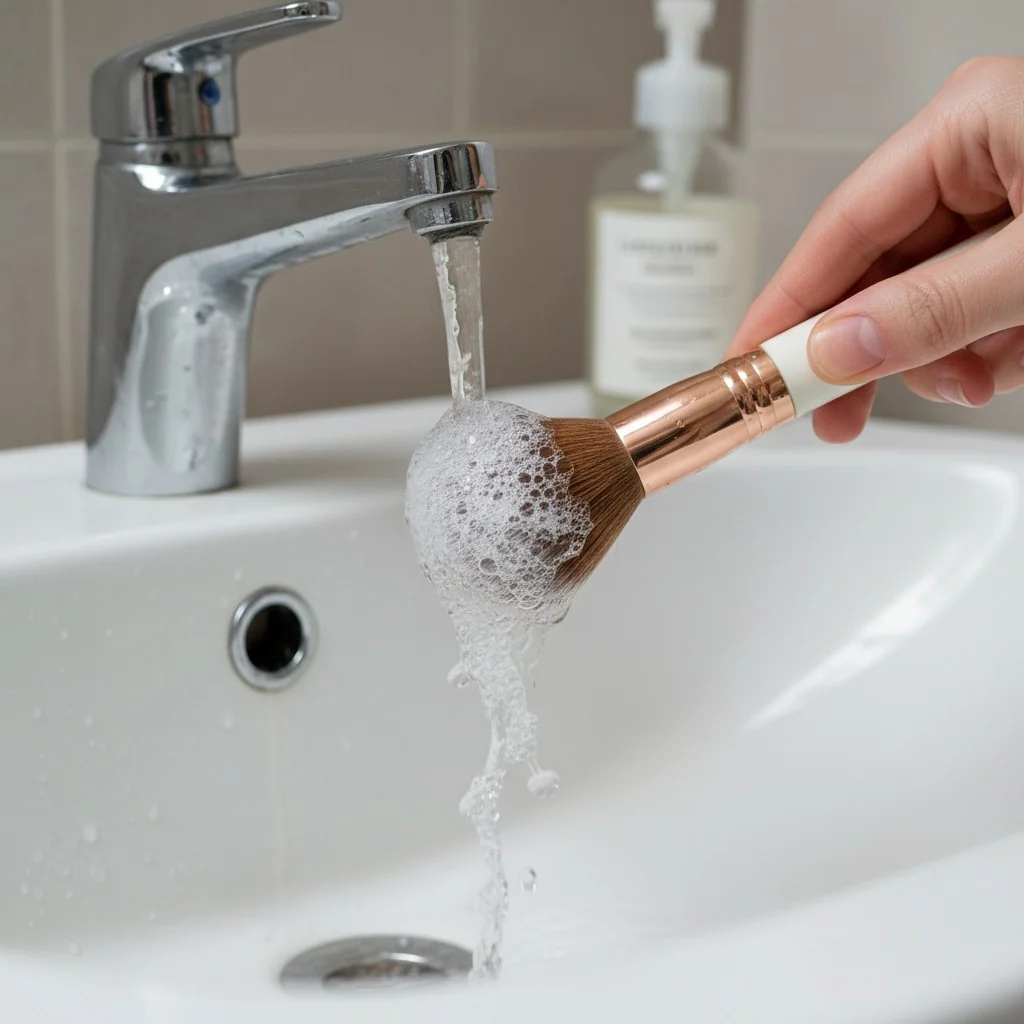
A brush can pass all the visual checks and still fail in practice. This is why performance testing is non-negotiable. For brand owners like you, this step validates that the brush will deliver the experience your customers expect. It also gives you important information about product care.
Performance: Pickup, Laydown, and Blend
Use the sample brush with the types of products it’s designed for.
- Pickup: Does it grab the right amount of product without making a mess?
- Laydown: Does it deposit color evenly on the skin?
- Blend: Does it blend the product seamlessly without streaks or patchiness?
Test with both a powder (like a blush) and a cream (like a foundation or concealer). A great brush will perform well with both textures.
Durability and Hygiene
Wash the brush. I recommend a 3-cycle wash test with a mild cleanser and lukewarm water. After three washes and air-dries, a quality brush should look almost new. The bristles must retain their original shape, there should be almost no shedding, and the ferrule must remain firmly attached.
This is also a good time to think about hygiene. A 2025 study I reviewed was shocking: it found that 44.3% of users rarely clean their tools. The same study found common skin bacteria on 81% of the used brushes they tested. By choosing easy-to-clean synthetic fibers and providing clear washing instructions, you help your customers reduce this risk and protect their skin.
Dirty makeup brushes can cause skin problems.True
A 2025 study confirmed a link between infrequent cleaning, high microbial presence on brushes, and self-reported skin issues among users.
Natural hair brushes are easier to clean than synthetic brushes.False
High-quality synthetic bristles are non-porous, making them less likely to trap makeup and easier to clean thoroughly, which also helps them dry faster.
What is a fast, 5-minute QC checklist for OEM buyers?
You have samples on your desk but no time for a deep analysis. Missing one critical flaw can lead to a disastrous bulk order. Use my 5-minute QC checklist6 to decide with confidence.
Quickly feel the bristles for softness and pull gently to check for shedding. Twist the ferrule to test for wobble. Look for visible glue. Check the handle for balance and a clean finish. This is your rapid evaluation.
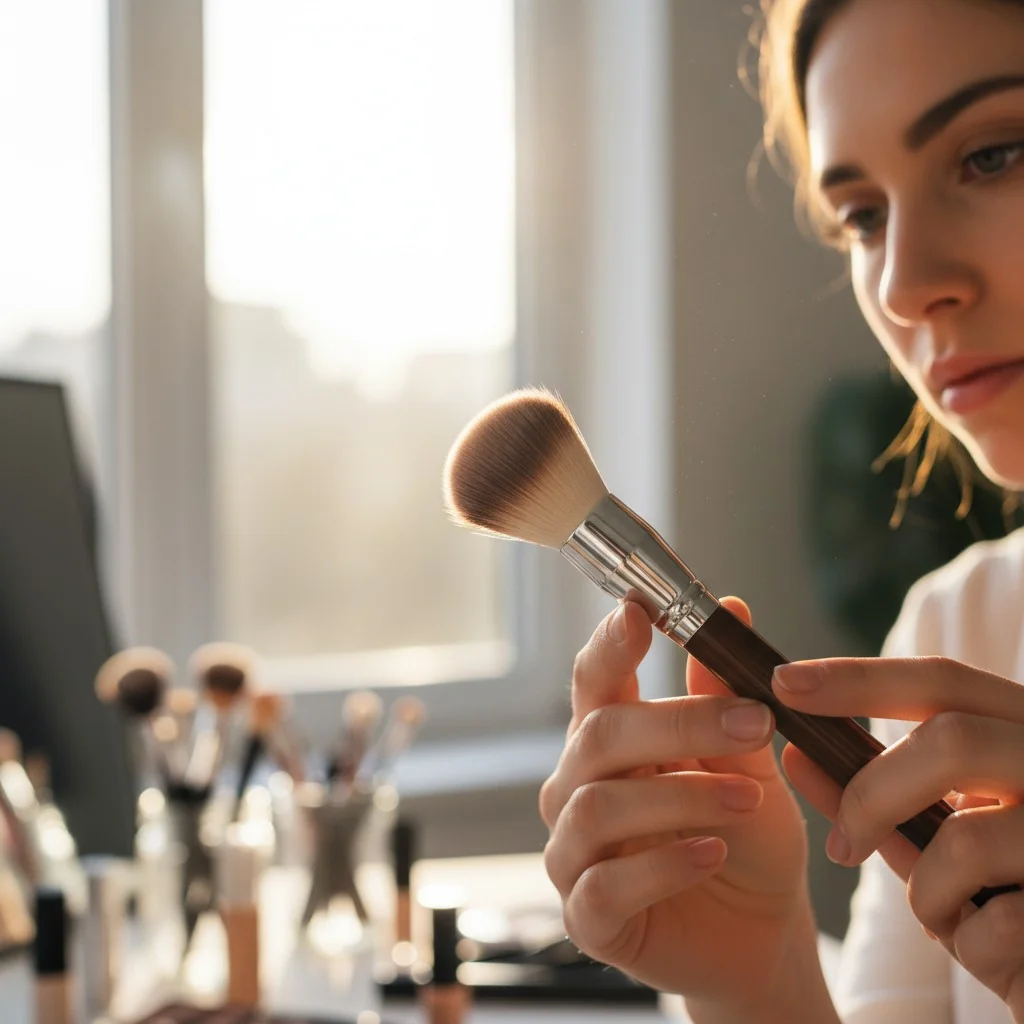
When you’re sourcing, time is money. You might have dozens of samples to get through. This is the exact checklist I use to quickly assess quality. It takes less than five minutes per brush, but it tells me 90% of what I need to know about the manufacturer’s standards.
This checklist is designed to be fast, tactile, and effective. It helps you move from a subjective "it feels nice" to an objective evaluation of quality.
| QC Check (1-Minute Each) | Pass Criteria | Fail Criteria |
|---|---|---|
| 1. Bristle Feel & Shed Test | Silky soft, no scratchiness. Uniformly tapered tips. Zero hairs come loose on a gentle pull and swirl. | Prickly feel, blunt-cut tips, any shedding. |
| 2. Ferrule & Crimp Test | Seamless or very clean seam. Firm double-crimp. Zero wobble or noise when twisted against the handle. | Gaps in the seam, loose crimp, any movement or creaking. |
| 3. Adhesive Check | No visible glue at the ferrule base. No strong chemical smell (indicates poor curing). | Visible, messy glue seep. A strong solvent odor. |
| 4. Handle & Finish Check | Feels balanced in hand. Straight, with a smooth, chip-free finish. Logo imprint is crisp and clear. | Too light or unbalanced. Warped, chipped paint, or blurry logo. |
| 5. Quick Performance Test | Picks up powder evenly. Blends a cream product on the back of your hand without streaking. | Doesn’t pick up product well, leaves obvious streaks. |
This simple process protects your investment and your brand. If a brush fails any of these basic checks, it’s a clear sign that the factory’s quality control is not where it needs to be.
The logo printing quality is a good indicator of a factory's attention to detail.True
A crisp, perfectly centered logo shows precision and care, while a blurry or off-center one can be a red flag for sloppy production standards overall.
Brush handles made of plastic are always lower quality than wood.False
High-grade recycled plastic or weighted resin handles can be very durable, balanced, and sustainable, while low-quality, unweighted wood can feel cheap and splinter.
Conclusion
Spotting quality is a skill. Use these checks on materials, build, and performance to source brushes that elevate your brand and ensure your customers get the best.
References
-
Understanding the advantages of soft, tapered bristles can enhance your makeup application experience. ↩
-
Explore the significance of tapered tips for better product pickup and blending. ↩
-
Understanding the double crimp can help you assess the quality of brush construction. ↩
-
Identifying glue issues can help you avoid low-quality brushes. ↩
-
Find out how this test ensures your brushes maintain quality after multiple washes. ↩
-
A QC checklist can streamline your evaluation process for sourcing high-quality brushes. ↩


